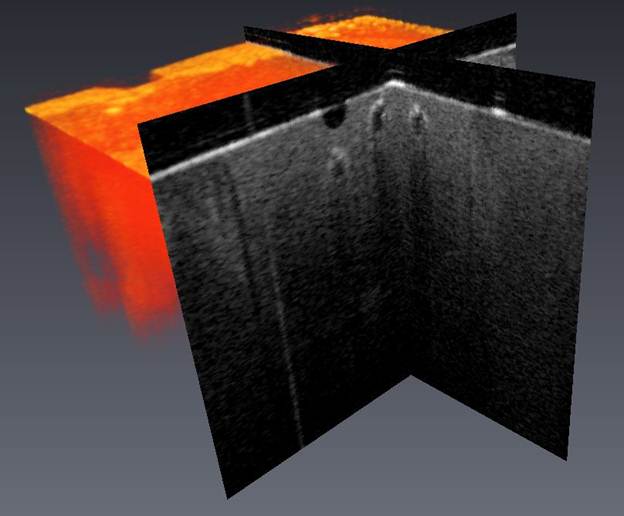Objective: Voids in the resin composite bulk affect the longevity of the restoration. This study aimed to investigate the potential of swept-source optical coherence tomography (SS-OCT) for 3D quantitative assessment of voids in resin composite bulk non-invasively.
Methods: Four flowable resin composites, MI Flow (MF; GC), MI Fil (MI; GC), Surefil SDR Flow (SF; DENTSPLY), Clearfil Majesty LV (MJ; Kuraray Medical) and a universal composite Clearfil AP-X (AP; were evaluated in this study (n=5). Class I cavities (4 mm diameter and 2 mm depth) were prepared, treated with Clearfil SE Bond (Kuraray Medical) and bulk-filled. The restorations were 2D and 3D scanned with SS-OCT (Santec) with spectral bandwidth centered at 1310 nm at a 20 kHz sweep rate before and after polymerization. From each specimen 20 digital cross-sections were analyzed (Total 100 scans for each group) to calculate the frequency of void formation and their sizes. Selected specimens were sectioned and observed under Scanning Electron Microscope (SEM).
Results: MJ showed the highest number of voids followed by MF. No voids were found in AP-X. There was a significant difference in frequency of void formation in the bulk of composite among materials (Kruskal-Wallis test, p<0.001). The data were confirmed by SEM images Table presents mean (SD) of voids per specimen, with similar letter showing no significant difference (Mann-Whitney U test, p>0.05).
Composite
| MF
| MI
| SF
| MJ
| AP
|
Voids
| 3.6(1.1)a
| 0.8(1.3)b
| 0.2(0.4)b
| 14.8(5.1)c
| 0(0)b
|
MJ showed significantly higher rate of void formation among the flowable composites tested (p<0.05).
Conclusion: Voids were mainly generated during dispensing of flowable composites into the cavity. Formation of void was variable among different composites. SS-OCT is a useful tool for non-destructive objective evaluation of resin composites.
Keywords: Assessment, Composites and SS-OCT, void
See more of: Dental Materials 7: Polymer-based Materials-Physical Properties and Performance
![[ Visit AADR's Website ]](images/banner.jpg)
